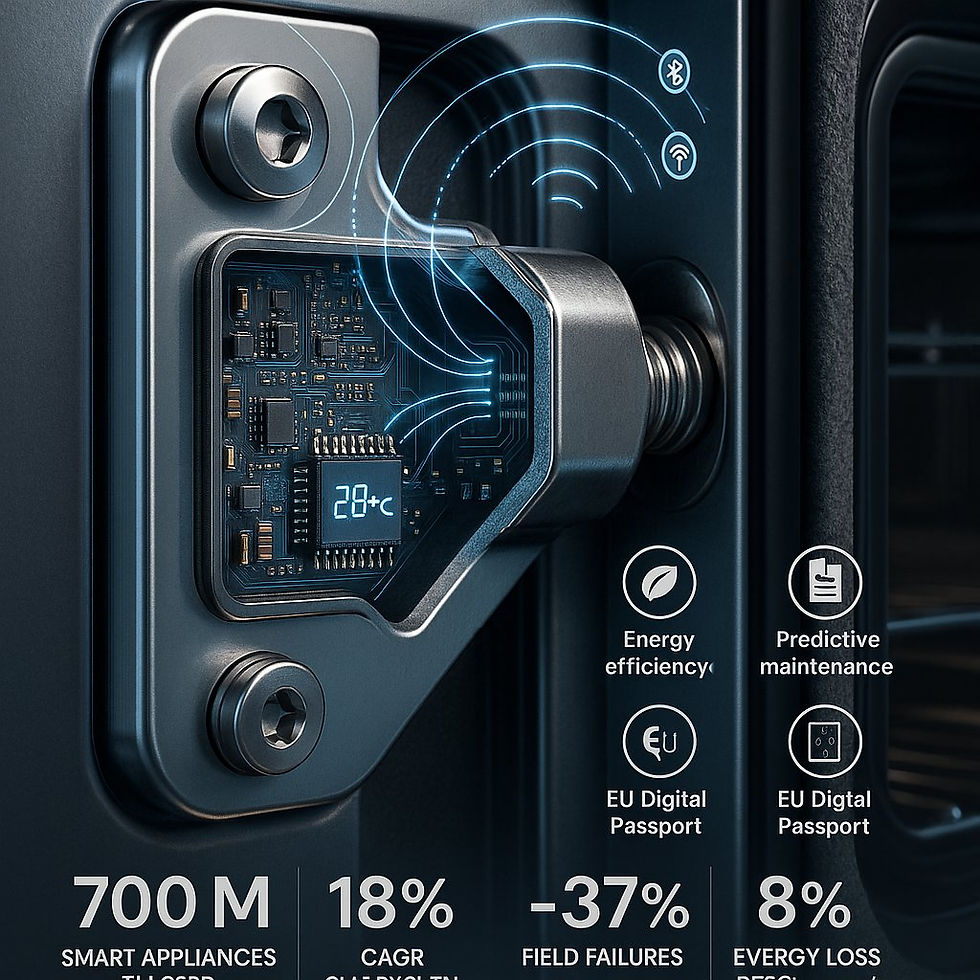Sustainable Manufacturing Trends for Agricultural Metal Components
- Mike Li

- Aug 15
- 3 min read
Sustainable Manufacturing Trends for Agricultural Metal Components
How forward-thinking sourcing managers are reshaping farm equipment supply chains with low-carbon metallurgy, circular design, and smart energy.
Why Sustainability Is Now a Core Procurement Metric
Regulatory pressure, farm-gate economics, and brand reputation all converge on agricultural OEMs. Forty-seven percent of machinery buyers now include a carbon disclosure clause in RFQs (according to Dirac Inc. 2025 Outlook). Cost is still king, but lifecycle impact is the new tie-breaker—putting sourcing managers in the spotlight.
The 4 Pillars of Sustainable Metal Component Manufacturing
Responsible Raw Materials
Energy-Efficient Processing
Design for Circularity
Transparent Supply Networks
Pillar 1 – Responsible Raw Materials
Recycled & Low-Carbon Steels
Electric arc furnaces (EAF) powered by renewable electricity slash embodied CO2 by up to 75 % compared with basic oxygen furnace (BOF) steel (AGCO Sustainability Report 2024). HRB Industries sources EAF-based S355 and high-strength steels, certified through EPDs, ensuring consistent weldability and toughness for frames, hitch components, and PTO guards.
Aluminum-Steel Hybrids
Weight drives fuel burn. Swapping side panels, seed hoppers, or combine grain tank covers to 6000-series aluminum trims 14 %–22 % curb weight, cutting soil compaction and diesel use (National Material 2024).
Emerging Bio-Alloys
Powder-metal composites infused with lignin-derived binders are entering small-batch test runs for spline gears and linkage bushings, reducing petrochemical content by 18 %.
Pillar 2 – Energy-Efficient Processing
High-Efficiency Laser & Fine Blanking
HRB’s 12 kW fiber lasers deliver 40 % lower kWh/part than CO2 units while holding ±0.05 mm on sheet metal assemblies.
Fine blanking presses consolidate multiple stamping stages, eliminating secondary machining and saving an estimated 0.8 MWh per 10k parts.
Smart Furnace Management
AI controls on heat-treat ovens modulate burners in real-time, cutting natural-gas usage by 22 % (internal HRB data, 2024). Predictive maintenance algorithms prevent unplanned downtime and scrap.
On-Site Renewables & Storage
Our mid-west plant now operates a 3.2 MW rooftop PV array with lithium-iron-phosphate storage, enabling 52 % renewable share across machining and powder-coat lines.
Pillar 3 – Design for Circularity
Design for Disassembly (DfD) and part modularity are transforming after-sales economics.
Data Call-Out: According to McKinsey Circular Metals 2024, agricultural OEMs that standardize reusable sub-assemblies can unlock 5–7 pp EBIT uplift by 2030.
Key Practices
Bolted, rather than welded, joists on header frames
Single-alloy fasteners for simplified end-of-life recycling
QR-coded component passports for traceability
Pillar 4 – Transparent Supply Networks
Blockchain-enabled mill certificates, Scope 3 dashboards, and standardized EPDs are replacing spreadsheets. HRB integrates digital twins to model energy intensity and logistics emissions for every batch number—empowering sourcing managers with decision-grade data.
Case Study: 28 % Emission Cut on Row-Crop Cultivator Frames
Client challenge: A global OEM needed to meet EU Machinery Regulation 2027/654 carbon limits without redesign delays.
HRB solution:
Switched 8 mm plates from BOF S355 to EAF S355JR-LC.
Consolidated six progressive die operations into a single fine-blanking cycle.
Applied water-borne powder coating cured at 160 °C (vs. 190 °C standard).
Results:
28 % reduction in cradle-to-gate CO2e
7 % lower landed cost
12-week lead time maintained
What Sourcing Managers Should Do Next
1. Update Supplier Scorecards
Include targets for SBTi alignment, % renewable energy, and recycled content.
2. Pilot Low-Carbon Material Swaps
Start with non-safety-critical panels or brackets. HRB provides process-capability data packs to de-risk trials.
3. Embrace Digital RFQs
Use platforms that capture embedded emissions alongside price and lead time.
HRB Industries: Your Partner in Sustainable Metal Processing
From precision machining parts to sheet metal assemblies, HRB’s vertically integrated operations deliver:
ISO 14001-certified plants in North America & APAC
Traceable EAF steel, aluminum, and biometal supply
Fine blanking, CNC, laser cutting, and modular assembly under one roof
Real-time production dashboards for sourcing teams
Regional Insights: North America vs. EU Sourcing
North American buyers benefit from the IRA’s Section 45X credits on low-carbon metals, potentially shaving $0.06/lb off qualified steel. EU buyers must navigate CBAM tariffs—notably €65/t CO2e on imported iron/steel from 2026. HRB’s multi-site footprint lets you allocate production to optimize both cost and compliance.
KPIs That Matter in 2025-2030
KPI2024 Baseline2030 TargetEmbodied CO2e per kg component2.2 kg≤1.1 kgRenewable energy share35 %80 %Water use per part1.1 L0.5 LRecycled material content18 %50 %
Conclusion
Sustainable manufacturing of agricultural metal components is no longer a niche—it’s the cost-competitive, compliance-ready path forward. By partnering with HRB Industries, sourcing managers can simultaneously hit ESG targets, reduce total cost of ownership, and secure agile supply chains.
Ready to upgrade your component strategy? Learn more on our website or book a 30-minute meeting to discuss your next project.



Comments